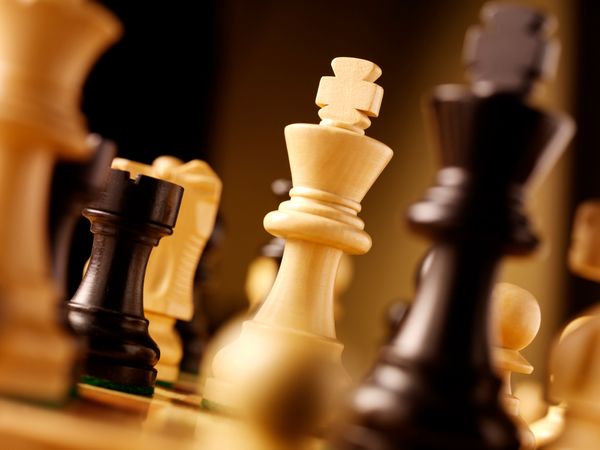It's taken seven turns to put my Khet game pieces into position, but with my next move, I'll issue a death knell to my opponent's pharaoh and secure my place as victor. What I didn't count on, though, was an equally crafty approach by my adversary. While I was concentrating on total domination, he was stealthily maneuvering pyramids and scarabs into place to destroy my pharaoh instead. Clearly, I'll need a more effective strategy next time.
Even if the members of your social circle are more into "Call of Duty" than Monopoly, Khet just might offer a kitschy way to get them to game night. Decidedly low-tech when compared to computerized combat, Khet has one intriguing feature most board games lack: lasers.
Advertisement
Khet is a strategy-based board game in which two players fire lasers to strike and remove game pieces from the board. Each time a laser is fired, its trajectory is determined by the position of mirrored playing pieces. The object is to hit your opponent's pharaoh with a laser, thereby claiming victory, all the while protecting your own king. In this way, Khet is similar to chess. However, with only four moveable pieces and much simpler rules, Khet takes only a few minutes to master. Figuring out how to position your game pieces so they'll reflect laser beams onto your opponent's vulnerable pieces, however, is another story entirely. The good news is that since Khet only takes about 15 minutes to play, you'll have time to employ new tactics again and again.
An Egyptian-themed game, Khet takes its name from an ancient measurement used to mark the fields of Mesopotamia. A khet is comprised of 100 cubits, which is the distance from your elbow to the end of your middle finger. It's a fitting moniker for a game in which pieces march (or rotate, as the case may be) toward victory.
Since its debut in 2005, Khet has been getting plenty of attention, including a Mensa Select Award in 2006, and a National Parenting Publications Award and iParenting Media Award in 2007.
Advertisement




